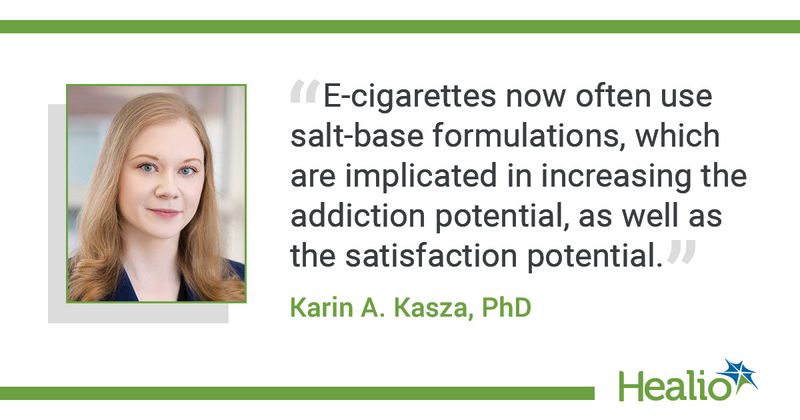Study: Partial restrictions not enough to dissuade e-cigarette use
Click Here to Manage Email Alerts
Key takeaways:
- Restrictions placed by the FDA on e-cigarette flavors and products in 2020 have not dissuaded young consumers from e-cigarette use.
- Young people used e-cigarettes not included in the enforcement efforts.
Partial restrictions that cover only a subset of products have been ineffective at discouraging e-cigarette use among young people, according to a study published in JAMA Network Open.
In early 2020, the FDA’s Center for Tobacco Products (CTP) announced a policy that targeted e-cigarette flavors not categorized as tobacco or menthol in an effort to dissuade children and young adults from using such products.

“After the FDA prioritized its enforcement of sweet-flavored cartridge e-cigarettes, we wanted to determine whether/how youth may have changed their e-cigarette use behaviors,” Karin A. Kasza, PhD, a researcher in the department of health behavior at Roswell Park Comprehensive Cancer Center in Buffalo, New York, told Healio.
Kasza and colleagues examined national data from the Population Assessment of Tobacco and Health (PATH) study, which tracks behaviors, beliefs and the health of people aged 12 years or older in the U.S. They studied data collected in 2019 and 2021, before and after the FDA’s e-cigarette enforcement.
“We then evaluated e-cigarette initiation and continuation rates across this time period,” Kaszka said.
They found that a partial policy of restricting appealing flavors in only some e-cigarette device types did not prevent youth from using flavored e-cigarettes, with most young people who used vaping products continuing to use a flavored product even after the restrictions.
“This outcome was not surprising because, generally, partial efforts do not produce conclusive results,” Kasza said. “What was surprising was that the pattern of e-cigarette use changed in recent years.”
In addition to finding that nearly 50% of young people who used e-cigarettes in 2019 also used e-cigarettes in 2021, the authors found that the rate of continuing e-cigarette use was higher than it had been in previous years.
“While we found continuation rates to be similar for those who used sweet-flavored cartridge e-cigarettes and those who used other flavor/device combinations, a key factor that distinguished continuation rates between 2019 and 2021 was frequency of e-cigarette use: Over 70% of youth who used e-cigarettes 20 to 30 days per month in 2019 were still using e-cigarettes 2 years later,” Kasza said.
The results suggest that most youth who initiated or continued e-cigarette use in 2021 used flavor or device combinations that were excluded from the CTP’s enforcement priorities, the researchers said.
“The overall high rate of continued e-cigarette use among young people today compared to rates in previous years warrants further investigation,” Kasza said. “Compared to earlier e-cigarette products that mostly used free-base nicotine formulations, e-cigarettes now often use salt-base formulations, which are implicated in increasing the addiction potential, as well as the satisfaction potential.”
Kasza said providers can help prevent e-cigarette use in children.
“Pediatricians can play a role in addressing youth e-cigarette use by asking their patients if they use e-cigarettes, as well as all other tobacco products, as a first step to educating them about the addiction these products can cause,” Kasza said.
